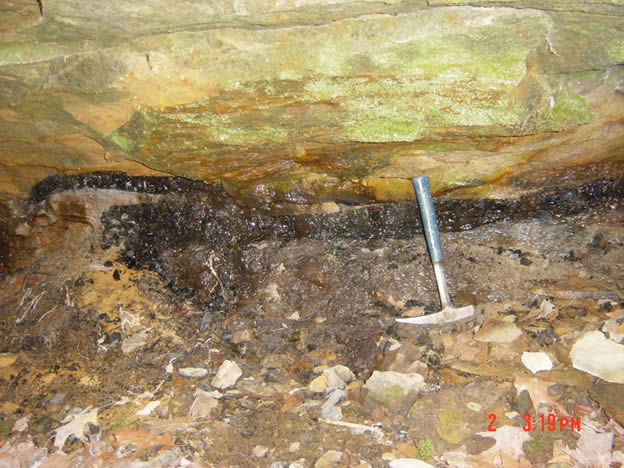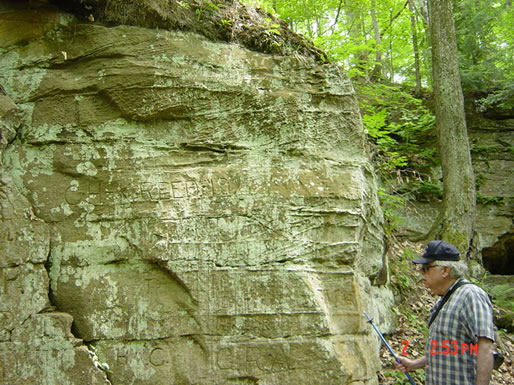
This station along Sandstone Creek is just around the corner from GL4. Similar rocks dominate this outcrop. Here the view of the outcrop is generally toward the east or east-southeast. The outcrops are dominated by the same reddish-brown weathering Eaton Sandstone with crossbeds up to a meter thick. Several cycles of crossbeds are well exposed along the fractured outcrop surface in the photo below. Notice again the generally northeasterly direction of the foreset beds.
Dr. Neal provides a detailed explanation for the cross beds formed here.
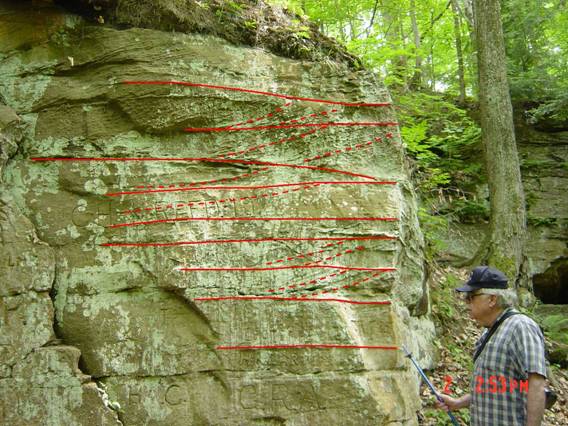
In one part of this outcrop an overhang reveals soft grey underclay along with fragments of coal beds. Underclays are commonly found beneath Pennsylvanian coal layers and are thought to represent the soil horizon in which the plants that ultimately form the coal were rooted.
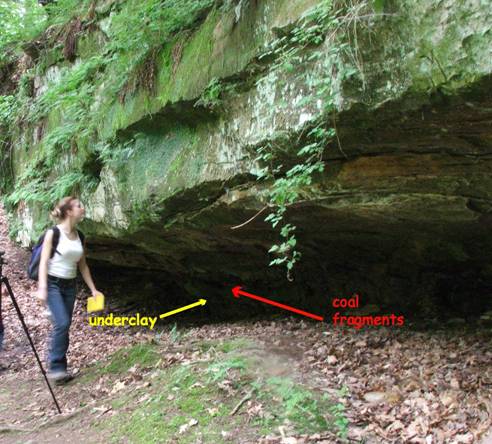
This photo shows a close up from below the outcrop overhang of a black coal fragment that stretches the length of the photo overlying a grey underclay layer (upward from hammer handle). Other coal fragments viewed below the overhang are shown in the photo below. The coal fragments in this outcrop have a tabular shape and appear to be fragments of coal beds. This brittle fragmented character of the coal layers suggests that the coal layers were lithified (and thus buried and presumably exhumed and eroded) prior to fragmentation. Thus, Velbel and Brandt (1989) interpret the contact between the coal and overlying Eaton Sandstone member of the Grand River Formation as an unconformity.
Velbel and Brandt (1989) also studied the different types of clay minerals present in the underclay. Different clay minerals can be indicative of different climatic conditions at the time that they formed. By comparing the underclay mineralogy at Grand Ledge with underclays of a similar age elsewhere in the Midwest and in the Appalachians they can get a better idea of Pennsylvanian climate variations in this part of the North American continent.
In order to understand sedimentary rock sequences in the context of the regional geology, geologists like to compare or correlate rocks from one area with rocks of a similar age in another area. This is easiest where there is a lot of bedrock exposure (like the mountain areas of the U.S. southwest). In the Midwest, bedrock exposures are few and so correlations must often be made over long distances.
Repeated sedimentary sequences of sandstone, shale, and coal, called cyclothems, that represent alternating marine and terrestrial (land) environments are common to Pennsylvanian rocks of eastern North America. The repetition of similar rocks makes correlation difficult even over short distances. Field workers in the Grand Ledge area have noted this problem, pointing out that even the coal layers in different localities within the Grand Ledge area may not be the same horizon.
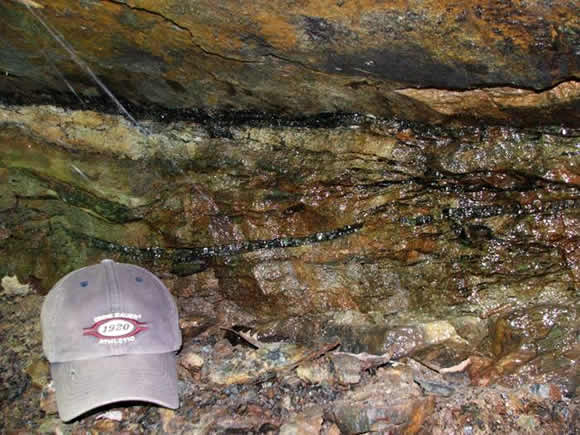
Origin of Pennsylvanian underclay and related seat rocks
http://bulletin.geoscienceworld.org/
cgi/content/abstract/72/11/1643
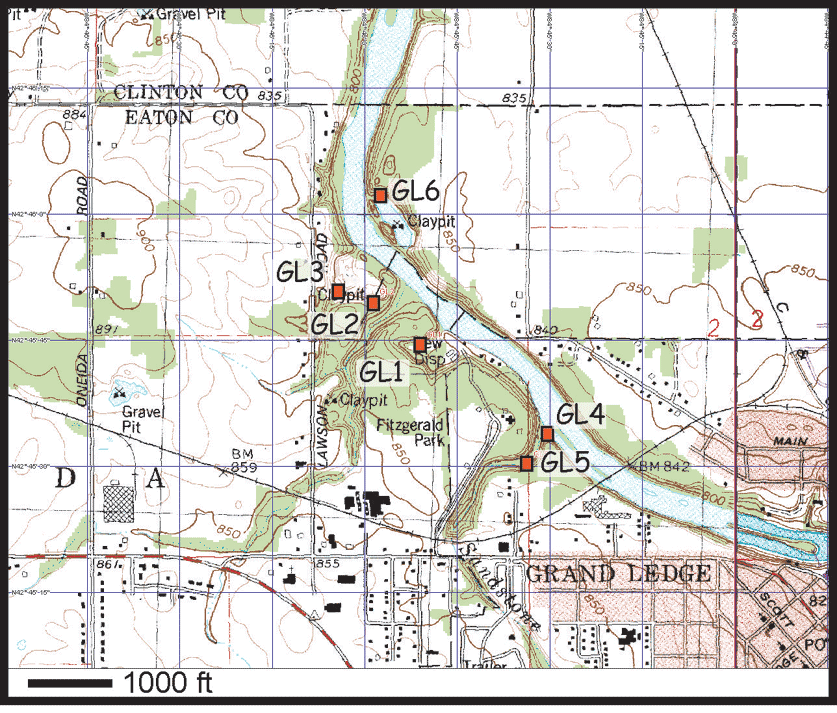
You are at GL5
Station 5 |
| Tours | Photos | Videos | References | Maps | GL Home | Home |
